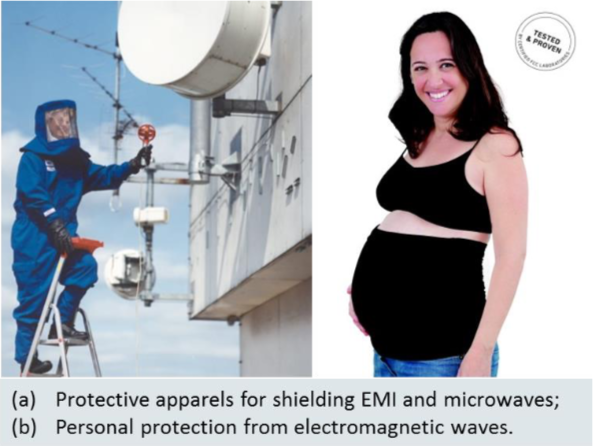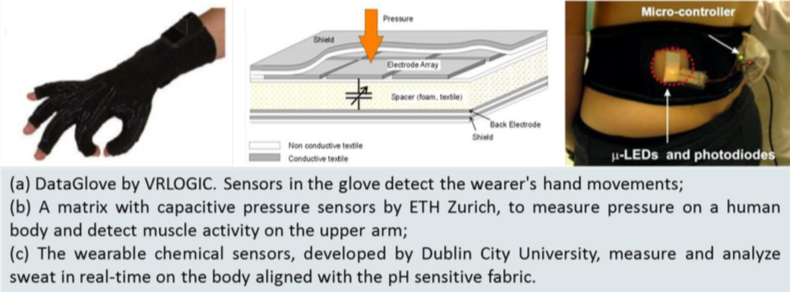Having electrical conductivity is often a prerequisite for many smart and intelligent textiles with high demands in antistatic applications, sensing, data transfer, monitoring, corrosion protection and electromagnetic interference shielding.
For electromagnetic factor shielding, metal coated or electro-conductive polymers coated textiles have been adopted for surface reflection and adsorption1. Such materials can be used as camouflage products for military, shielding EMI and microwaves for the industry2, blocking electromagnetic waves from electronic appliances for personal health3 4.
The textile-based sensor has become one of the most developed fields for functional and smart textile products. The sensors have different functions. For example, stretch sensors can sense and monitor body parameters, including heart rate, respiration, movement and pressure blood. Electrochemical sensors augment conventional physical measurements. Applications have been realized in various areas5 6 7.
There are other techniques and materials studied for functional and smart textiles, including but not limited to shape memory polymers for medical garments and pressure sportswear, biodegradable materials for drug release medical devices, and energy harvesting and portable power supply systems for healthcare, sports and entertainment.
- Kim, M.S., et al. (2002), PET fabric/polypyrrole composite with high electrical conductivity for EMI shielding, Synthetic Metals, 126(2–3): 233–239.
- http://www.swiss-shield.ch/Products.45.0.html?&L=1 [16-06-2018]
- Kuhn, h.h. (1997), Adsorption at the liquid/solid interface: conductive textiles based on polypyrrole, Textile Chemist and Colorist, 29(12): 17–21.
- http://www.vesttechinc.com/AboutContact.aspx#about [16-06-2018]
- Pacelli, M.; Loriga, G.; Taccini, N.; Paradiso, R. Sensing Fabrics for Monitoring Physiological and Biomechanical Variables: E-textile solutions. Proceedings of the 3rd IEEE-EMBS International Summer School and Symposium on Medical Devices and Biosensors MIT, Boston, MA, USA, 4–6 September 2006.
- Stoppa, M., & Chiolerio, A. (2014). Wearable electronics and smart textiles: a critical review. Sensors (Basel), 14(7), 11957-11992.
- Windmiller, J. R., & Wang, J. (2013). Wearable electrochemical sensors and biosensors: a review. Electroanalysis, 25(1), 29-46.

